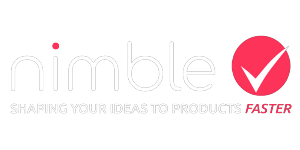UI/UX Design


User Interface (UI) design is a process the designer uses to create interfaces for devices by focusing on appearance and style. User Interface Design is one of the most important aspects of user experience design (UX) and responsible for the design of a wide range of products and services.
Designers want to create interfaces that are easy to use and comfortable for the user, with a high degree of user-friendliness and ease of use for users and developers.
They don’t care what the design looks like, but how they do the job with minimal effort. UI is the access point where the user interacts with a design and quickly evaluates it, paying attention to usability and likeability.
UI should also be pleasant, or at least satisfying, and not frustrating. When the design predicts the needs of the user, they can have a more personal and comprehensive experience. Find and understand the “customer journey” and you optimize the best and most intuitive interface that can provide a seamless experience
Often confused with UX design, UI design is more than the surface and overall feel of a design. UX designs cover the entire spectrum of user experience, but UI designs are the essential components of the user experience that designers incorporate into their craft. The analogy is to imagine the difference between a user interface (UI) and a product design (UX) with different levels of interaction. The UI is the controls of the jet, and tu UX is how much fun it is to fly.
The user interface should be easy to maintain and should contain only elements that serve the user’s purpose. Respect the user’s eyes and attention to the layout and create an invisible feeling. Typically, choose an orientation between edge and center, but not too far from the center.
Distance between letters: Avoid inserting excessive colors and buttons and avoid excessive spacing between buttons and other elements such as symbols.
Minimize the number of actions to perform a task: Specify your favorite actions and focus on one of the main functions of the page. The user should simply capture the meaning in the scan, and the user can easily navigate to the correct action.
Use appropriate UI design patterns to help the user reduce stress (e.g. fill in form), but beware of using dark patterns that contain pre-filled check boxes. Always give feedback, regardless of the user context, from which the users can derive the next step. Keep users informed of the system’s response to your feedback actions and keep them connected with the feedback system, such as the check box on the right side of your form.
So keep asking yourself, “Can I make things easier for you?” The best interface is the one where the user doesn’t even have to think about how to use it, and just does, and enjoys the experience.

